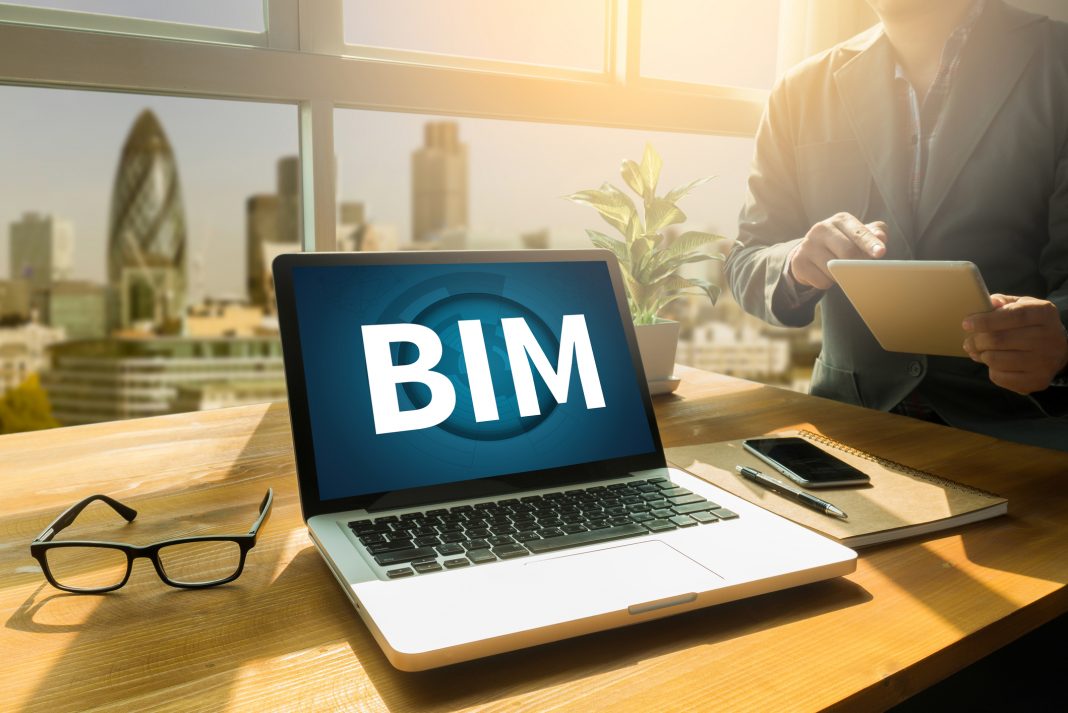The widespread adoption of BIM and its associated technologies within the top tier of UK construction companies has created a digital transformation revolution within the industry in recent years. This has filtered down to the design and build sector and it is already making waves. Alex Turner, group BIM manager at Oktra, takes a look
Technology is changing the way information is shared and the way construction projects are managed. BIM software facilitates a collaborative way of working and keeps everyone on the same page. With the design and build sector starting to implement BIM, there is scope for some real change. Using new technology to manage information about construction projects has enormous potential and that is why Oktra has committed to this digital transformation process.
2D computer-aided design (CAD) has been the preferred design tool within the design and build sector for many years. Moving from this to using 3D BIM models and other digital tools make the design and project management processes much more streamlined. If we followed the CAD approach, these two elements would be worked on separately and combined at the end but under the BIM process, project management and design are more aligned. This means that there is greater scope to share information and monitor project costs more accurately. Following this new process makes everything much more collaborative and reduces the risk of inaccuracies or inefficiencies.
The benefits of investing in BIM
There has been a big effort towards developing our own vision of the digital construction site of the future. At Oktra, we have been putting changes in place to make this vision into a reality.
The goal is really to make behavioural and structural changes that allow us to improve on-site processes, improve safety and reduce risk. But for all the promises of change, there is a danger in promising a revolution. If we are making big over-generalisations, the reality is that we can undersell the true impact of what we are trying to achieve.
People want to know what it does and how it affects them. So, while there is an acceptance of the proposed benefits of implementing BIM, part of our strategy has been to focus on the practical, foundational improvements it can make for individuals.
Using BIM software, such as Revit, has benefitted our design productivity immensely. Automation has changed the way we do things, which means that time-consuming manual tasks can be automated and, in turn, this frees up valuable design resource.
There are more opportunities on the horizon too and we are now focusing on optimising our construction processes by enabling 4Dand 5D construction sequencing, as well as using clash detection software. We have also implemented the use of reality capture laser scanning to increase our knowledge of the existing buildings we are working in.
Since introducing BIM technologies, we have been able digitise our construction workflows and replace our on-site manual data entry with digital data. By using cloud-based document management software, all our project stakeholders and project teams use these interactive platforms to view and edit real-time project information and models regardless of geographical constraints. This sort of change is enabling efficient interdisciplinary cloud-based collaboration between all our internal and external construction teams.
Introducing BIM to design and build
The construction industry has faced a lot of challenges over the last couple of years due to the pandemic. However, one positive that has come out of this adversity is that it has made construction companies rethink the way they use, implement and manage digital technologies. Some companies have had to start their digital transformation journey from scratch, and it has forced others to completely U-turn on their digital adoption strategy altogether.
One of the biggest challenges we faced at Oktra was the re-education of existing staff. This sounds simple but it is a slow process, and it takes time and money. We had to overcome the ‘resistance to change’ attitude that has been a part of the sector since the introduction of AutoCAD 40 years ago. However, this was a challenge that we anticipated and through our training and development sessions, we are now starting to see a change in attitude to the digital transformation revolution.
At Oktra, we wanted to build a scalable and sustainable future and taking the digital route was one of the key solutions we used to futureproof our business. To achieve this, we have created a bespoke digital technology transformation strategy that is tailored to our needs. Rather than setting goals for a radical overhaul, we wanted to create a company future vision with clear, practical and achievable objectives.
These objectives are underpinned by technology and processes that can be integrated into our ever-evolving digital workforce. Timescales and costs are always going to be the dominant focuses within the construction industry and BIM is clearly the most effective tool to influence new processes so despite some of the initial challenges, it is the way forward.
Is design and build ready for BIM?
Design and build is primed for BIM. So much had changed in the way projects are designed and delivered that it would be counterintuitive to not upgrade the way we work on them. So while it is still a jump and by no means fully integrated, we are at the point now where BIM will be a big distinguishing factor between the leading companies in a few years. In some ways, it already is but due to the infrastructure of design and build firms, it still hasn’t been fully embraced.
When you’re making wholesale changes to something like construction workflows that potentially impact hundreds, even thousands, of people, the key is to start small. One of the key ingredients to making the BIM implementation strategy successful at Oktra has been to seek the buy-in of people at all levels of management within the company. This is the most important thing about our own BIM strategy as it relies on the buy-in from the right people to help build momentum and drive the initiative forward. Once approval was given by upper management, there was a landside of enthusiasm throughout the rest of the business.
We’re at a point now where the benefits of digital technology have been well documented across the media. It isn’t a secret that BIM can make a significant impact – there are numerous test cases that have shown the benefits of increasing investment in construction technology. We have seen first-hand how investment can lead to increased company efficiencies, reduced overhead costs and help to build a scalable and sustainable future. Design and build is still in a transition period but we are already positioning our teams to capitalise on opportunities that will help us make huge strides in the near future.
Alex Turner
Group BIM manager
Oktra
Tel: +44 (0)20 7553 9500
LinkedIn: Oktra
Facebook: OktraUK
Instagram: Oktra














